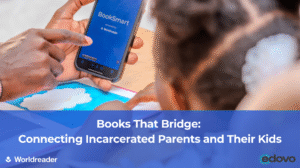For years, the country’s most vulnerable have faced a “homework gap.” The sudden shift to online learning has left them even further behind.
The digital divide has existed ever since technology became a part of our everyday lives. For years, students of color, low-income students, and students with disabilities have had less access to technology and consequently, were more likely to face a “homework gap”. However, during the pandemic, the gap has widened even further.
In March 2020, this disparity became more apparent than ever, when nearly all schools in the United States abruptly shut down and all instruction moved online. As no child or parent expected this shift, many were not equipped for it. According to the Pew Research Center, one-in-five parents with homebound school children believed that their child would likely not be able to complete their schoolwork because they did not have access to a computer at home, and 29% of families reported needing their child to do schoolwork on a cellphone. A similar amount (22%) reported that their child had to use public Wi-Fi to complete their schoolwork.
Lower-income children were the most impacted by this shift, with 43% of them needing to do schoolwork on their cellphones and 40% of them needing to use public Wi-Fi to complete their schoolwork. In addition, most Americans who worry about being able to pay for home internet are low-income and Hispanic or Black.
Governments, schools, and parents are stepping up to bridge the gap.
In light of this digital divide, many local governments and organizations have stepped up to address this crisis. Cities like Washington DC are providing free internet to lower-income households and improving public wi-fi hotspots. Community support and parental support are just as important. Parents are finding ways to keep their children engaged in an online learning environment while communities are creating socially distanced “pandemic pods” and online support groups. The Brookings Institute lists bigger changes that still need to be made – such as WiFi in subsidized housing and homeless shelters – but these are a good start.
Organizations like Worldreader are also stepping up by providing free remote learning resources.
Support from charities and organizations during this emergency is crucial. In response to school lockdowns, Worldreader launched its Keep Children Reading campaign in May, which has provided free digital books to over 500,000 families in the Global South. In November, Worldreader brought Keep Children Reading to the United States.
Through Worldreader’s BookSmart App, families can access free, quality global children’s books right on the mobile phones they already own. A full 40-week learning program with weekly books and learning activities is also available to under-resourced communities through community-based organizations in partnership with Worldreader. BookSmart is a light, purpose-built app for children and parents that works on any data-enabled phone. Books can be downloaded for later reading to further reduce data costs. To read from BookSmart today, download the app or access it through your mobile browser at bebooksmart.org.
Your donations are so important during this nationwide learning crisis to keep children reading. Please consider donating to Worldreader here.




